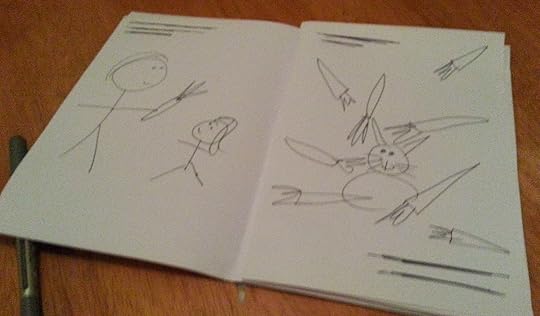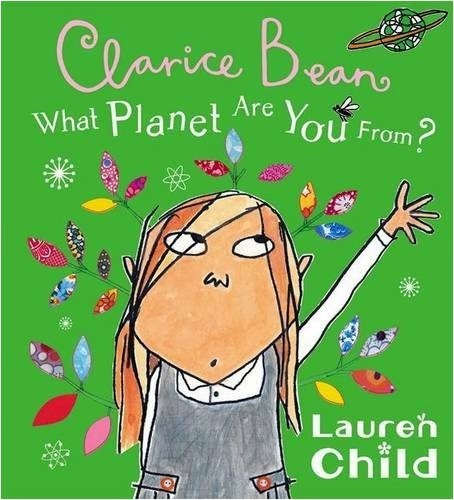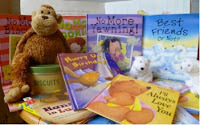Extra Tips On Writing Picture Books, by Paeony Lewis
At the Picture Book Den there’s a titanosaurus-sized mass of tips on how to write children’s picture books. So is there any advice left? Maybe! I’ve decided to pass on four slightly different, personal tips.
 Titanosaurus (BBC)
Titanosaurus (BBC)
Tip 1
 Join an evening class on writing poetry. Yes, you did read that correctly! I spent a year attending poetry classes with a friend and after a few months we discovered that the quality of ALL our writing had improved. Writing poetry (not rhyme) for adults made us think harder about word choices. Revision is constant and clichés are shunned. It’s the attention to EVERY word that has left the strongest impression.
Join an evening class on writing poetry. Yes, you did read that correctly! I spent a year attending poetry classes with a friend and after a few months we discovered that the quality of ALL our writing had improved. Writing poetry (not rhyme) for adults made us think harder about word choices. Revision is constant and clichés are shunned. It’s the attention to EVERY word that has left the strongest impression.
So if you join a course on writing poetry and have a tutor that won’t accept lazy writing, I suspect your picture-book writing will stealthily improve. However, I won't guarantee how long the influence will last - I think I need to return to writing poetry!
Tip 2
Looking at published picture books can be daunting to a new writer. Perhaps you wonder if you’ll ever be able to match the awesomeness of your favourites. If this is a problem and you lack confidence, then type out the text of a picture book (one that is understandable from the text alone). This makes the process of writing a picture book feel more manageable and may help with the analysis of the story.
Tip 3
As many of you know, picture book writers often divide their text into twelve spreads (a spread is a double page). Or sometimes writers follow the example of illustrators and ‘storyboard’ using twelve boxes to represent the twelve spreads. However, I’ve found that taking this a step further with a simple, physical mini book can help new writers think harder about the potential illustrations and story structure. Of course, the final illustrations may be completely different and if you don’t illustrate then they’ll be out of your control, but at this stage you’re just planning and moulding the story.

All you need to do is take a pile of 8 sheets of A4 paper and fold them in half. That’s it! You have a cover and book! Now sketch out your story and don’t worry that the drawings look pathetic – nobody else will see your stick figures. The aim is to help you visualise the story and page turns and see what might appear on every page. There’s no need to write the text – just use thick lines to represent the sentences. Perhaps you’ll discover there is too much text and the illustrations are too samey.
Tip 4
 With character-led stories your characters must be REAL to you, because if they’re not then how can you expect your reader to believe in them? The characters aren’t just nebulous talking bears, bunnies, pigeons, dinosaurs or small children. They’re individuals with specific character traits and emotions. It can be tricky with picture books as you have so few words, but take a look at picture books with main characters that have birthed several in a series and study what makes them come alive on the page. What makes that character appealing and ‘strong’ enough for people to want to read more?
With character-led stories your characters must be REAL to you, because if they’re not then how can you expect your reader to believe in them? The characters aren’t just nebulous talking bears, bunnies, pigeons, dinosaurs or small children. They’re individuals with specific character traits and emotions. It can be tricky with picture books as you have so few words, but take a look at picture books with main characters that have birthed several in a series and study what makes them come alive on the page. What makes that character appealing and ‘strong’ enough for people to want to read more?
Happy writing, everyone, and do whatever works for you!
Paeony Lewis
www.paeonylewis.com

 Titanosaurus (BBC)
Titanosaurus (BBC)
Tip 1
 Join an evening class on writing poetry. Yes, you did read that correctly! I spent a year attending poetry classes with a friend and after a few months we discovered that the quality of ALL our writing had improved. Writing poetry (not rhyme) for adults made us think harder about word choices. Revision is constant and clichés are shunned. It’s the attention to EVERY word that has left the strongest impression.
Join an evening class on writing poetry. Yes, you did read that correctly! I spent a year attending poetry classes with a friend and after a few months we discovered that the quality of ALL our writing had improved. Writing poetry (not rhyme) for adults made us think harder about word choices. Revision is constant and clichés are shunned. It’s the attention to EVERY word that has left the strongest impression.So if you join a course on writing poetry and have a tutor that won’t accept lazy writing, I suspect your picture-book writing will stealthily improve. However, I won't guarantee how long the influence will last - I think I need to return to writing poetry!
Tip 2
Looking at published picture books can be daunting to a new writer. Perhaps you wonder if you’ll ever be able to match the awesomeness of your favourites. If this is a problem and you lack confidence, then type out the text of a picture book (one that is understandable from the text alone). This makes the process of writing a picture book feel more manageable and may help with the analysis of the story.
Tip 3
As many of you know, picture book writers often divide their text into twelve spreads (a spread is a double page). Or sometimes writers follow the example of illustrators and ‘storyboard’ using twelve boxes to represent the twelve spreads. However, I’ve found that taking this a step further with a simple, physical mini book can help new writers think harder about the potential illustrations and story structure. Of course, the final illustrations may be completely different and if you don’t illustrate then they’ll be out of your control, but at this stage you’re just planning and moulding the story.

All you need to do is take a pile of 8 sheets of A4 paper and fold them in half. That’s it! You have a cover and book! Now sketch out your story and don’t worry that the drawings look pathetic – nobody else will see your stick figures. The aim is to help you visualise the story and page turns and see what might appear on every page. There’s no need to write the text – just use thick lines to represent the sentences. Perhaps you’ll discover there is too much text and the illustrations are too samey.
Tip 4
 With character-led stories your characters must be REAL to you, because if they’re not then how can you expect your reader to believe in them? The characters aren’t just nebulous talking bears, bunnies, pigeons, dinosaurs or small children. They’re individuals with specific character traits and emotions. It can be tricky with picture books as you have so few words, but take a look at picture books with main characters that have birthed several in a series and study what makes them come alive on the page. What makes that character appealing and ‘strong’ enough for people to want to read more?
With character-led stories your characters must be REAL to you, because if they’re not then how can you expect your reader to believe in them? The characters aren’t just nebulous talking bears, bunnies, pigeons, dinosaurs or small children. They’re individuals with specific character traits and emotions. It can be tricky with picture books as you have so few words, but take a look at picture books with main characters that have birthed several in a series and study what makes them come alive on the page. What makes that character appealing and ‘strong’ enough for people to want to read more?Happy writing, everyone, and do whatever works for you!
Paeony Lewis
www.paeonylewis.com

Published on October 22, 2014 00:00
No comments have been added yet.



